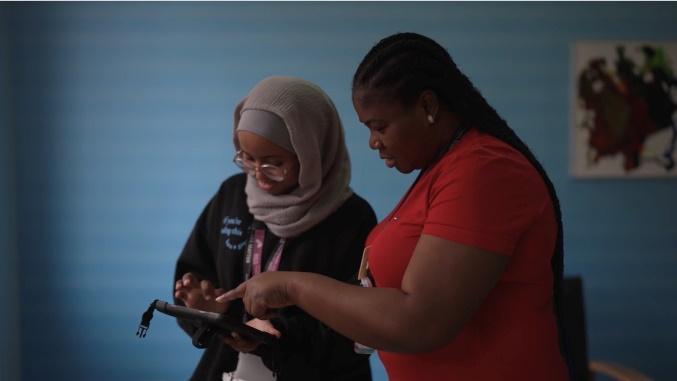Necessity is said to be the mother of invention and in 2020, more than any other year in recent memory, the world has been forced to do things differently as the Covid-19 pandemic has triggered rapid and significant changes in the way people work and how businesses operate. In 2021, many of the major structural shifts we have seen this year will continue to develop or become entrenched, and that need to be inventive will remain a powerful driving force. When it comes to telecoms, while new ideas are always emerging, we expect necessity to massively accelerate the adoption of innovations that are already here. Technologies that have huge potential but have yet to be fully embraced will come firmly to the forefront. And so, to our predictions of top telecoms trends for 2021:
A tipping point for 5G
5G has had many false starts, but 2021 could be the year when it really starts to take a predominant role in the telecoms space. With so many people now working remotely and using collaboration and messaging tools or video calls to communicate, we’ve started to see the demise of the traditional phone call. 5G is the ideal solution to replace landlines, using a SIM card as a fixed wireless access (FWA) to a cell tower, rather than having to install fibre cables physically into streets and homes.
Investing in 5G infrastructure to give more workers around the country access to high quality, superfast connectivity is looking more and more like a political imperative to keep as much of the economy as possible working and productive. If it’s in the national interest, we might even see government support being provided to networks to deliver widespread 5G… or so networks will be hoping.
5G networks found to be up to 90% more energy efficient than 4G
The politicisation of telecoms
Telecoms is becoming an increasingly politicised area, and this is unlikely to change anytime soon. 2021 is the deadline when networks in the UK will have to prove that they no longer use any Huawei equipment in their infrastructure due to political sensitivities, creating significant costs for those providers who have invested heavily in putting Huawei kit into their network core. Issues such as market competitiveness – either among the remaining 5G technology suppliers or among the networks themselves, some of whom are more impacted than others – could well come to the fore. If higher consumer costs or less competition result, that would concern the regulator.
We may see more governments around the world start to dictate what technology can be used within telecoms networks, and standardisation and interoperability between different 5G systems might also be proscribed. Opportunities for new market entrants promoting open source technology could expand.
Remote vs. on-prem: two extremes of connectivity
Working from home has been a dominant theme of the coronavirus pandemic. Even if vaccination programmes soon return life to “normal” next year, some workplaces may not reopen their doors, on the basis that there is no longer a compelling commercial case to maintain a physical presence. All the necessary infrastructure businesses need to function, including telecoms, can be hosted in the public cloud. Remote connectivity is all they need.
However, a diametrically opposite trend is simultaneously emerging at the other end of the spectrum. Those businesses that do require premises often do so because they have specific, significant requirements, for example around security, meaning everything must be kept on-site. Servers are held on-prem, and external connectivity is limited, essentially creating a private cloud, using a non-internet-enabled SIM. The polarisation between this self-contained approach and the remote approach looks set to become more pronounced.
How eSIMs will aid mass market IoT development
The world wakes up to IoT
Every year for the past five years at least has been proclaimed as the year the Internet of Things will truly enter our lives in earnest, but now IoT is gaining real momentum. The Covid-19 crisis has enforced greater creativity around the way IoT is deployed to meet urgent, critical needs, such as providing essential, SIM card-enabled connectivity between devices at emergency health centres springing up in car parks or in largely unstaffed factories powered by robots. Having demonstrated how it can be done, demand for IoT applications will continue to rise, especially in areas such as healthcare, manufacturing and retail distribution centres, as well as in “smart offices”, however 5G rollout will be required to unlock its full potential.
Edge computing comes to prominence
Requirement for – and uptake of – edge computing is likely to increase rapidly. New business models such as automated vehicles and remotely operated surgical robotics rely on optimal connectivity and low levels of latency (or lag), so that data is transmitted in real-time and critical actions can be taken instantly. Putting servers and appliances physically closer to the applications using them delivers latency efficiencies. Again, Covid has acted as a catalyst here, increasing the number of use cases for edge computing technology as more and more activities are undertaken by machines in a socially distanced environment.
How the edge and the cloud tackle latency, security and bandwidth issues
In fact, the list goes on and there are many other predictions we could make, such as the expanding opportunity set for networks to monetise the vast amounts of data that pass through their systems. Or the prospect of extended reality (XR) coming to life thanks to improved mobile network connectivity to support wearable technologies. Looking ahead, it’s an exciting landscape out there.
If 2020 has been about having change forced on the world, 2021 will be about embracing those changes in the realisation that these emerging innovations actually work much better than what went before, and that, with the right investment, support and drive, anything is possible.











